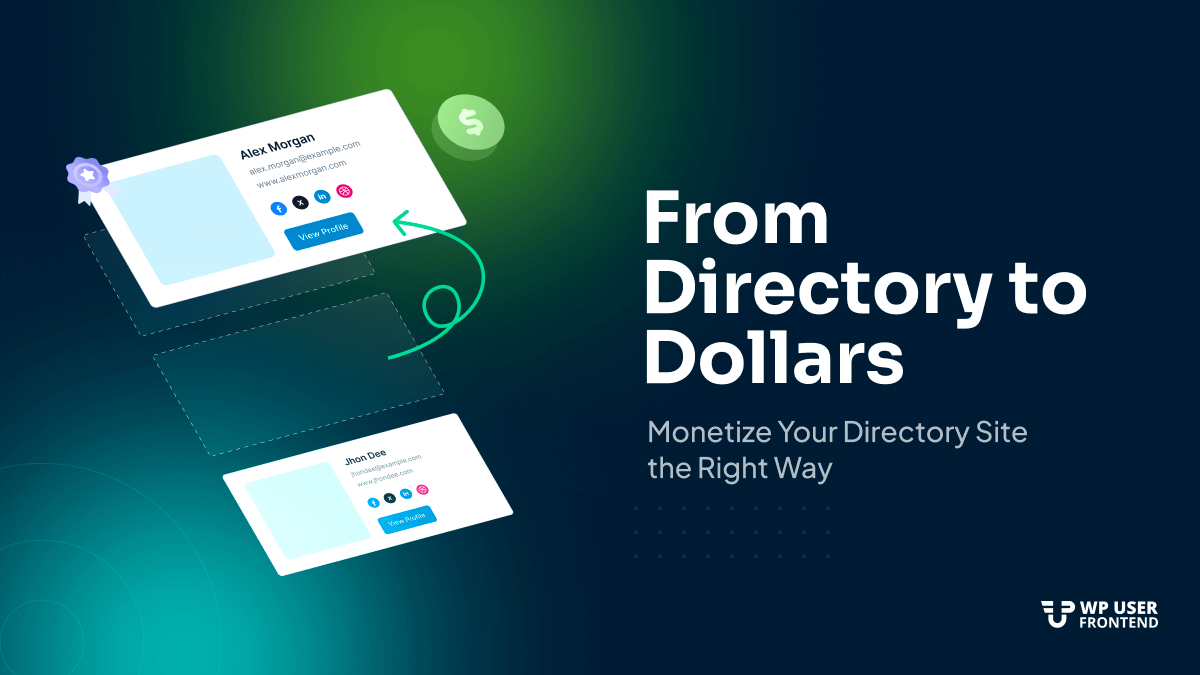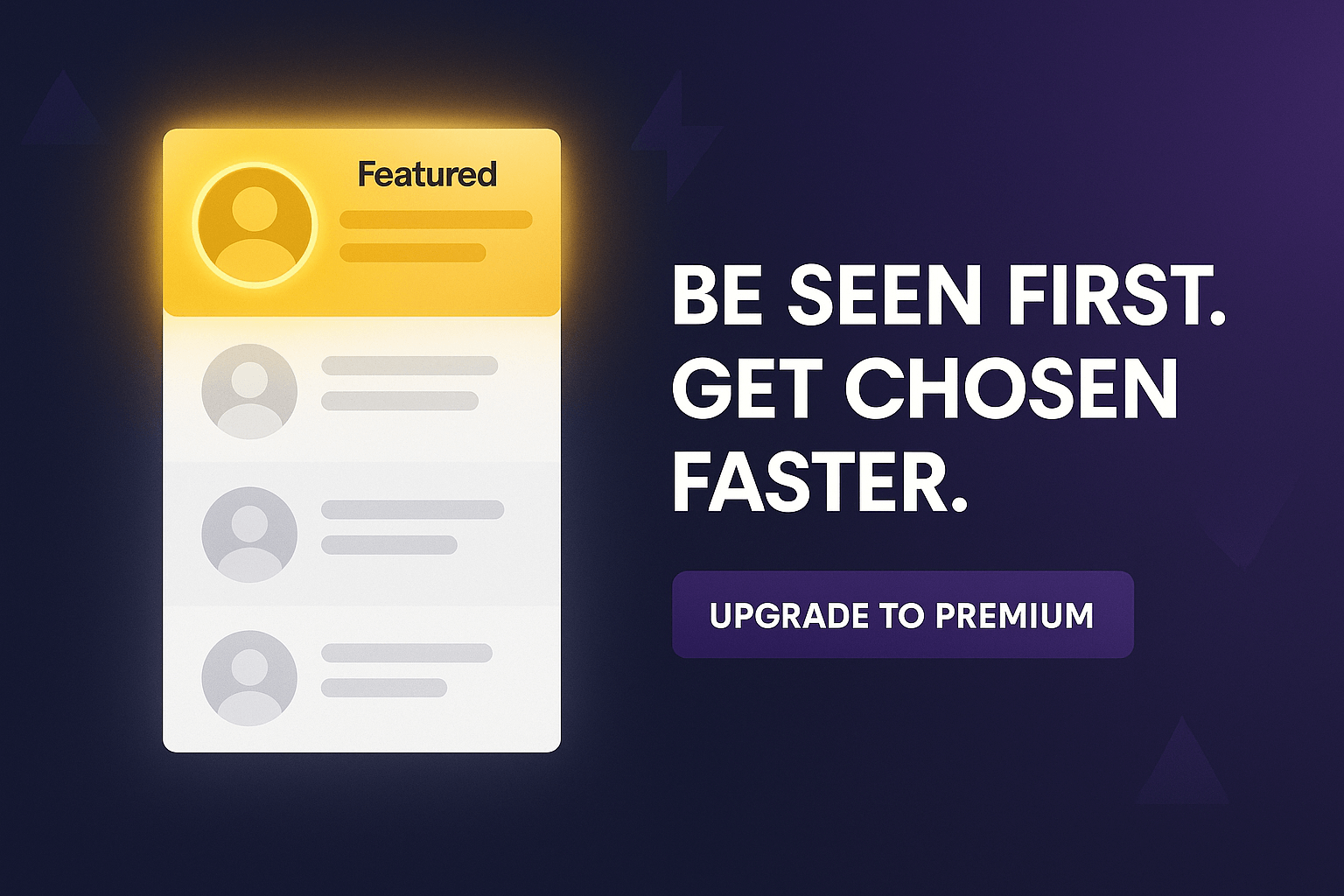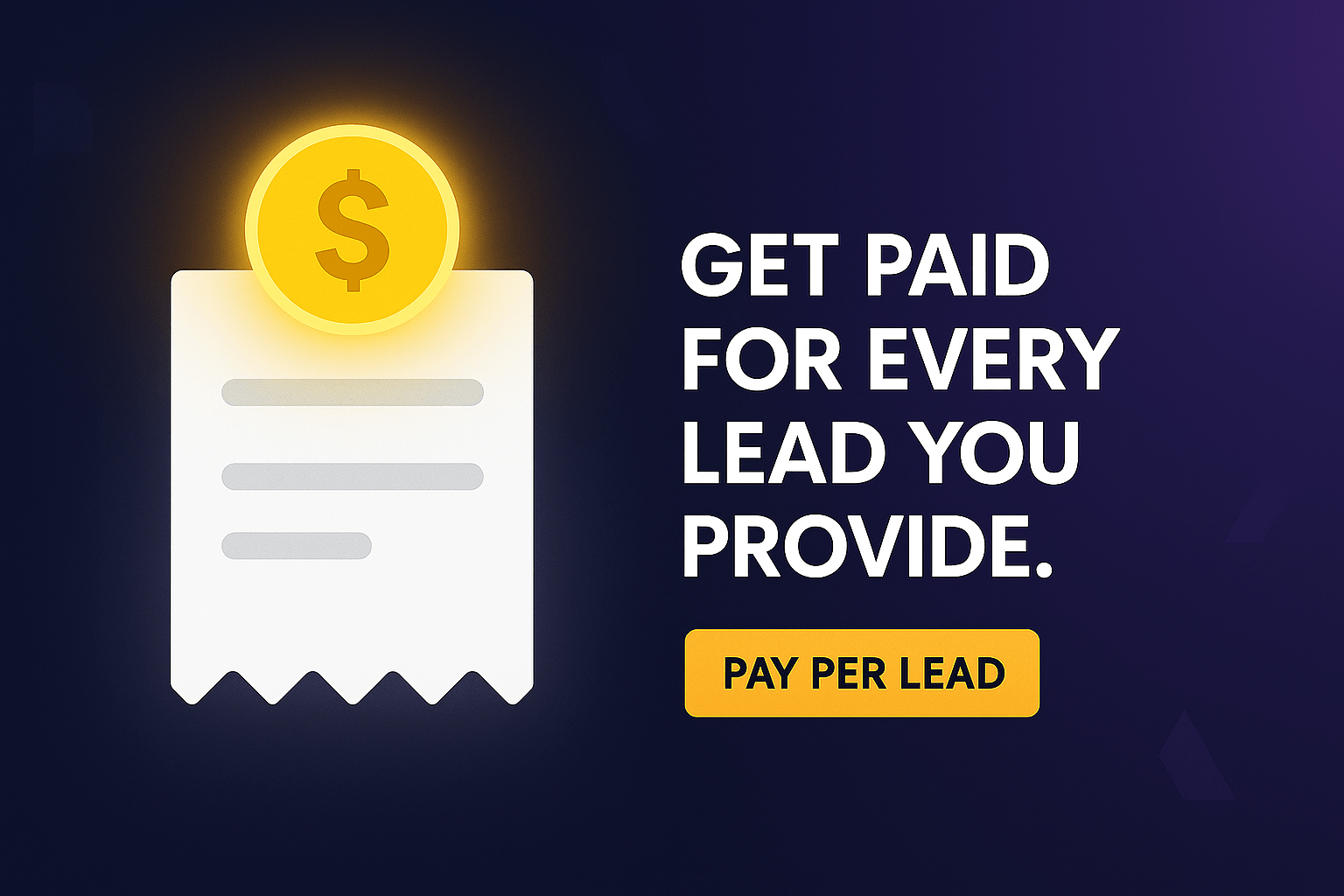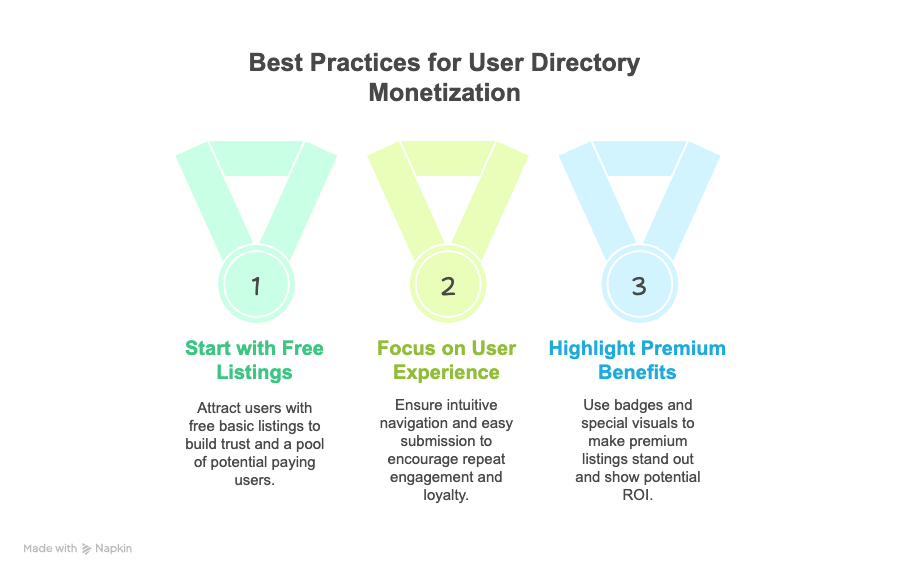
How to Choose the Right Monetization Model for Your Directory
Let's say you’ve just built a directory website, a hub where people can find local businesses, freelancers, service providers, or even niche communities. It looks great, it’s functional, but here’s the question: how do you turn all that hard work into revenue?
Building a directory is only half the battle. The real magic happens when you monetize it, turning traffic, listings, and leads into a steady income stream.
With WordPress, monetization becomes straightforward. And when you pair it with tools like WP User Frontend Pro, you can allow users to submit listings, manage subscriptions, and even feature top listings, all from the frontend. That means less technical hassle for you and more ways to earn.
In this guide, you’ll discover proven strategies to monetize a directory website. These tactics will help you turn your directory into a profitable online business.
Why a Directory Website Is a Smart Business Model
Directory websites aren’t just functional. They can be profitable as well. Here’s why building a directory is a smart move:
1. High Demand Across Niches
From real estate listings and restaurants to freelancers, pet services, and events, people are always searching for curated, reliable information. A well-maintained directory becomes the go-to resource in your niche.
2. Recurring Revenue Potential
Directories naturally lend themselves to recurring income. Paid listings, featured spots, subscription memberships, or lead generation can all bring steady monthly revenue, much more predictable than ad-hoc sales.

3. Easy Scalability
Once your directory is set up, adding more listings or even branching into multiple niches is straightforward. With the right tools, managing growth is smooth, and automation handles much of the heavy lifting.
4. Reduced Admin Hassle
Using plugins like WP User Frontend, you can let users submit and manage their listings from the frontend. That means less manual work for you and a better experience for your users. Features like subscription plans, payment collection, and listing approvals can be handled automatically, saving time while boosting revenue opportunities.
By understanding these advantages, you can see why a directory isn’t just another website; it’s a flexible business engine. Next, we’ll dive into the specific monetization methods that turn that engine into cash flow.
How to Choose the Best Monetization Model for Your Directory
Picking the wrong monetization model can turn your directory into a ghost town. Pick the right one, and it can become a self-sustaining business that grows year after year. The choice depends on three main factors: your audience, your directory type, and your current stage of growth.
1. Know Your Audience Like Your Best Friend
If you don’t know who you’re serving, you’re guessing, and guessing rarely pays.
Ask yourself:
- Are my users businesses, consumers, or both?
- Do they need visibility, leads, or exclusive access?
- Are they ready to pay a subscription fee or only for direct results like leads or clicks?
Example: A wedding vendor directory’s audience is usually vendors hungry for leads and couples looking for services. In that case, pay-per-lead or featured listings make more sense than generic display ads.
2. Match the Model to Your Directory Type
Here’s a quick pairing guide:
| Directory Type | Best Monetization Models | Why It Works |
|---|---|---|
| Local Business Directory | Featured listings, event promotion | Local businesses want visibility in their area and are willing to pay for prime placement. |
| Service Provider Directory | Pay-per-lead, memberships | Providers see direct ROI when they get leads, so they’re happy to invest. |
| Niche Hobby or Interest Directory | Memberships, affiliate marketing | Passion-driven audiences often pay for insider access and relevant products. |
3. Consider Your Traffic & Engagement Levels

- Low Traffic: Start with premium listings or pay-per-lead. These work even if you don’t have thousands of visitors yet, because the value comes from quality leads, not raw volume.
- High Traffic: Add ads and affiliate marketing to diversify. At this stage, impressions alone can be monetized.
4. Think About Scalability
You don’t want to switch models every six months. Pick something that can grow with you.
- If you plan to expand into multiple cities or niches, a membership model or multi-tiered listing plan works well.
- If you focus on one specific service type, pay-per-lead might remain your primary revenue driver long-term.
5. Use Tools That Keep Things Simple
No matter which model you choose, you’ll need systems that handle payments, manage user roles, and automate listing submissions.
- WP User Frontend Pro lets you create different submission packages, charge for upgrades, and control user access, all from the frontend.
- Dokan WordPress plugin can turn your directory into a service or product marketplace if you decide to branch out.
Pro Tip: Start with one monetization model, track performance for at least 3 months, then layer in a second model if the first is working. That way, you can test without overwhelming your users or your workflow.
How to Monetize a Directory Website (9 Proven Methods)
Once you've chosen the right method, it's time to implement the monetization model. If implemented correctly, a directory website can become your profit engine. The key is to create value for both users and businesses, then offer premium options that feel like a natural upgrade.
1. Charge for Adding Listings to Your Directory
This is the bread and butter of most directory sites. Businesses pay to get their listing published – simple and direct.
Ways to set it up:
- Flat fee: One payment for permanent placement. Works well for small directories.
- Recurring subscription: Monthly or yearly payments keep the listing active and relevant. Ideal for larger directories with frequent updates.
- Freemium: Basic listings are free to encourage signups. Premium listings get priority placement, rich media (photos, videos), or extra description space.
Example: A local restaurant directory offers free basic listings but charges $20/month for menus, photo galleries, and homepage placement.
With WP User Frontend, businesses can submit their details, upload images, and pay: all without touching your backend.
2. Sell Premium Placement with Featured Spots

Not every business wants “just another listing.” Many want the best spot, top of the page, larger images, or a bold “Featured” label.
Why it works:
- Higher visibility means more clicks.
- Limited slots create urgency.
- Premium spots can be rotated weekly or monthly, making them repeat revenue.
Example: An event directory charges $50/week for the top three featured events in each category, with a 90% renewal rate because businesses see results.
3. Turn Your Directory into a Paid Membership Hub
Instead of charging per listing, you can offer a membership model. Members pay a recurring fee for extra benefits, such as:
- Advanced search filters for better targeting.
- Access to exclusive categories or premium listings.
- Monthly reports on market trends.
- Discounts on advertising or events.
Think of it like the VIP lounge in an airport, not everyone gets in, but those who do feel special. With WP User Frontend’s role-based access, you can control exactly what paying members see and use.
4. Charge Per Lead You Deliver

Perfect for service-based niches like wedding vendors, real estate agents, or consultants. Businesses pay when a potential customer reaches out through your platform.
Advantages:
- Businesses love paying for measurable results.
- Your revenue scales with your site’s performance.
- You can charge more for high-value leads in competitive industries.
Example: A wedding vendor directory charges $10 per inquiry for photographers and $15 per inquiry for venues.
5. Sell Advertising Space Without Overcrowding
If your directory gets decent traffic, advertisers will pay for visibility. But the trick is to balance too many ads and users leave, too few and you’re missing revenue.
Options:
- Google AdSense: Quick setup, but lower payouts.
- Direct ad sales: Negotiate directly with brands in your niche for higher returns.
- Sponsored content: Let advertisers publish articles or guides that are clearly labeled as sponsored.
Keep ads relevant to your niche so they enhance rather than distract from your content.
6. Earn Affiliate Income from Relevant Products
When visitors trust your site, they’ll follow your recommendations. Affiliate marketing lets you earn a commission every time they buy something you recommend.

Best practices:
- Promote products or services your audience genuinely needs.
- Integrate affiliate links naturally into your content.
- Track performance to focus on what converts.
Example: A travel directory links to hotel booking sites and earns 10–15% commission per booking.
7. Package and Sell Your Data as Market Reports
Over time, your directory collects valuable insights: which categories are trending, what locations are booming, and what services are in demand. Businesses and investors will pay for that intelligence.
Important: Always anonymize personal data and comply with GDPR or local privacy laws.
Example: A beauty salon directory publishes an annual “Top Services & Trends Report” and sells it for $199 to salon owners and suppliers.
8. Offer Done-for-You Services to Your Listers
Listings get businesses noticed, but you can help them convert that visibility into sales. Offer upsells like:
- SEO optimization for their profile.
- Professional photography packages.
- Branding and logo design.
- Social media setup and management.
With Dokan, you can list these services directly in vendor dashboards, making it easy for businesses to buy extras without leaving your site.
9. Host Paid Events and Leverage Your Audience
Your directory already connects people, so bring them together. You can:
- Run in-person networking events.
- Host online masterclasses or webinars.
- Sell sponsorship spots at trade expos.
And yes, WP User Frontend can handle paid event submissions, premium event listings, and ticket sales from the frontend.
Bottom line?
You don’t need to choose just one. Start with two or three monetization strategies to get cash flowing, then expand as your traffic and authority grow. With WP User Frontend, you can automate most of the heavy lifting, so your directory isn’t just a resource; it’s a full-fledged business.
Best Practices for User Directory Monetization

Making money from your directory isn’t just about adding payment options. It’s about creating a system that users trust, value, and engage with. Follow these best practices to maximize revenue:
1. Start with Free Listings
- Attract users with free basic listings.
- Let businesses experience your platform before asking for payment.
- Free listings build trust and create a pool of potential paying users.
2. Introduce Paid Features Gradually
- Don’t overwhelm users with fees right away.
- Offer optional upgrades like featured listings, premium badges, or advanced analytics.
- Show the added value of paid features clearly.
3. Focus on User Experience
- Ensure navigation and search are intuitive.
- Make it easy to submit listings or upgrade to premium features.
- A seamless experience encourages repeat engagement and loyalty.
Plugins like WP User Frontend Pro allow frontend submission forms that are simple to use, reducing friction and boosting conversions.
4. Highlight Premium Benefits
- Use badges, top spots, or special visuals to make premium listings stand out.
- Show potential ROI for businesses considering paid listings.
5. Track Metrics and Optimize
- Monitor conversions, lead quality, and feature usage.
- Adjust pricing, placement, and promotions based on real data.
- A/B testing can help determine which monetization strategies work best.
6. Build Trust
- Ensure listings are verified or moderated.
- Keep ads relevant and non-intrusive.
- Transparency with fees, subscriptions, or affiliate links builds credibility.
Following these best practices ensures your directory isn’t just a website—it’s a revenue-generating platform that users love and trust.
Turn Your Directory into a Revenue Stream
A directory website can be much more than a static collection of listings. It can be a living, growing business that generates consistent income, only if you pick the right monetization mix and execute it well.
Start small. Test what resonates with your audience. Layer in premium options once you’ve built trust and traffic. Over time, your directory stops being “just another website” and becomes a revenue-generating ecosystem.
And here’s the real secret: with the right tools, you don’t need to wrestle with complex backend admin work. WP User Frontend streamlines user submissions, payments, and upgrades.
So, whether you’re spotlighting local businesses, showcasing industry experts, or curating niche communities, your directory can fuel both your audience’s needs and your financial goals.